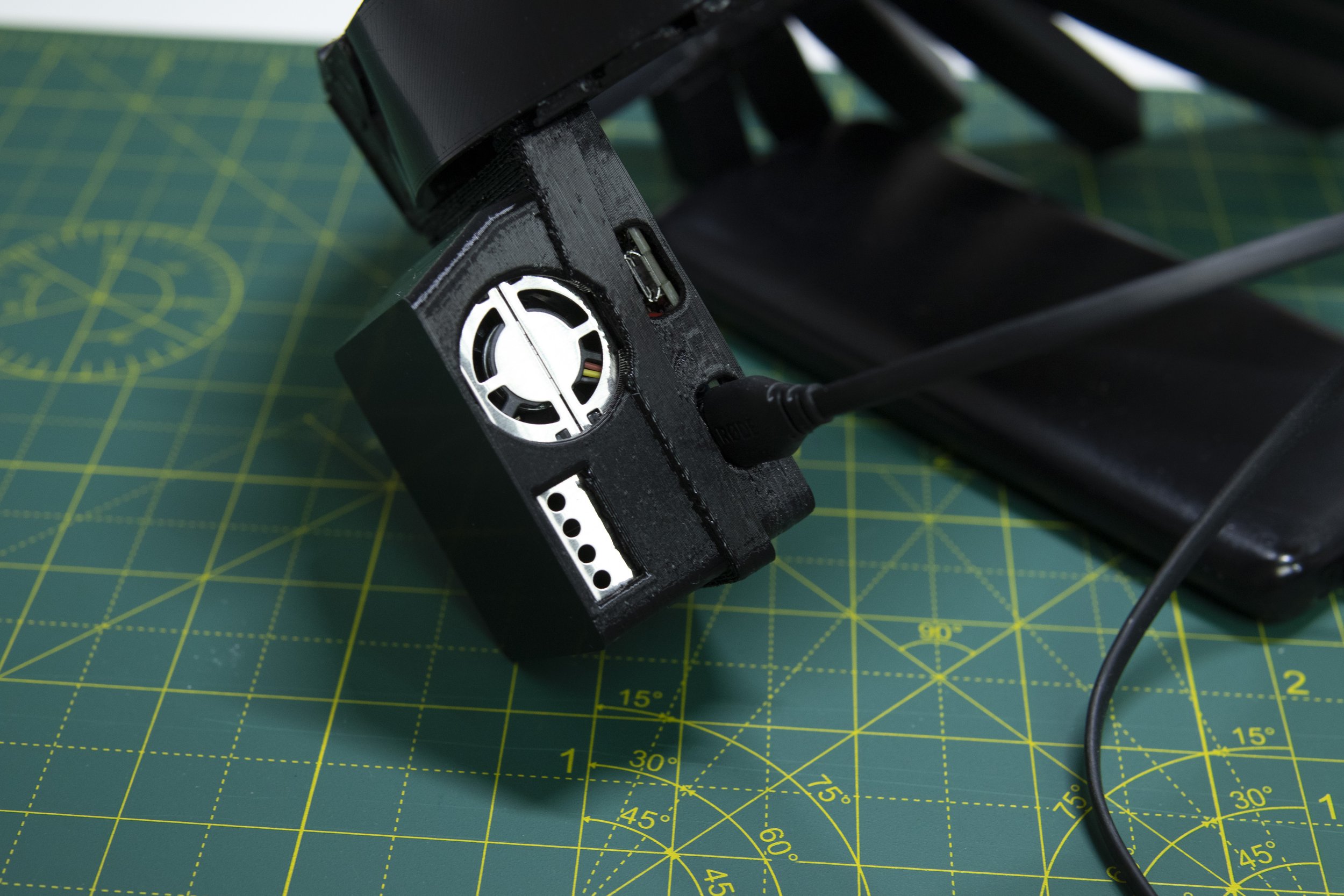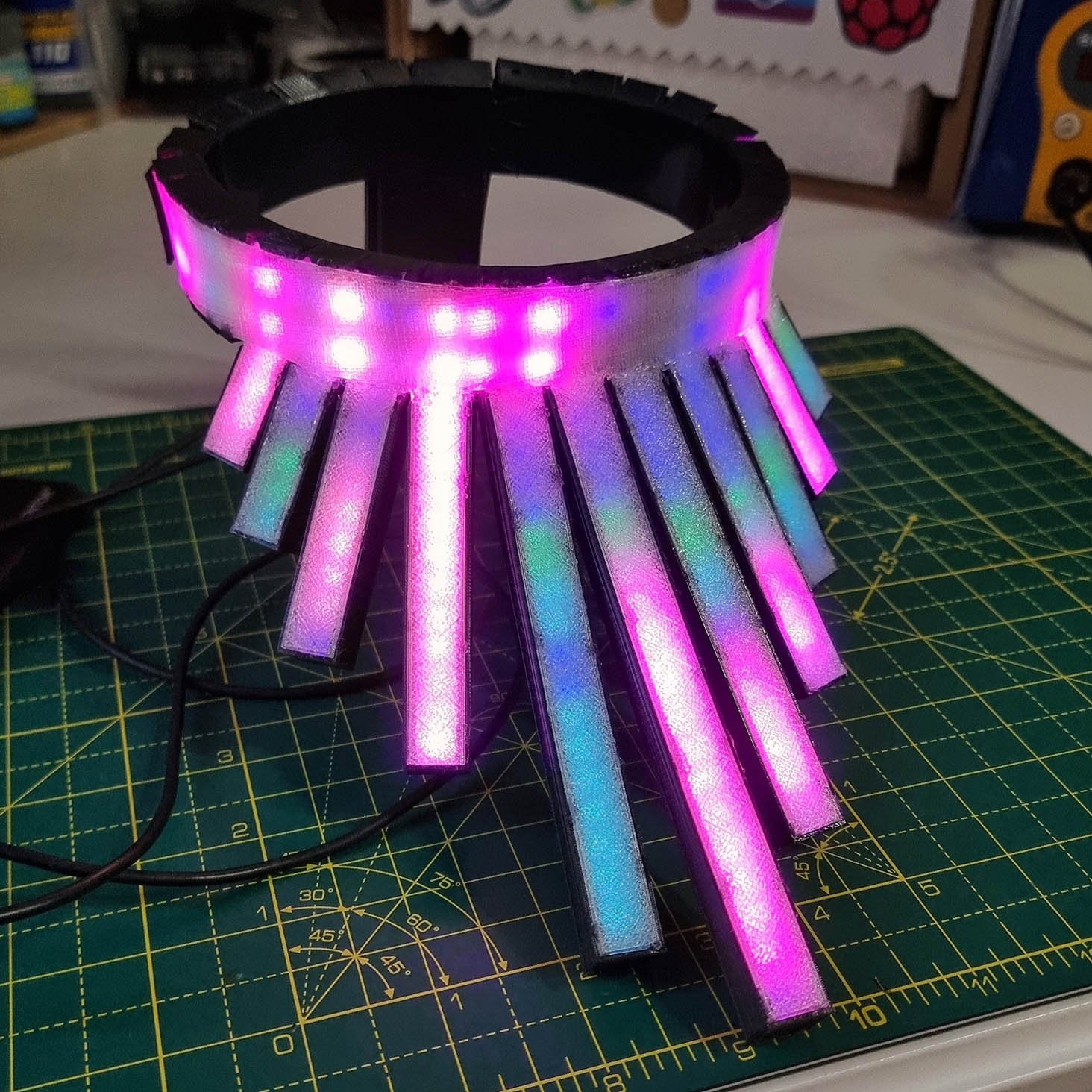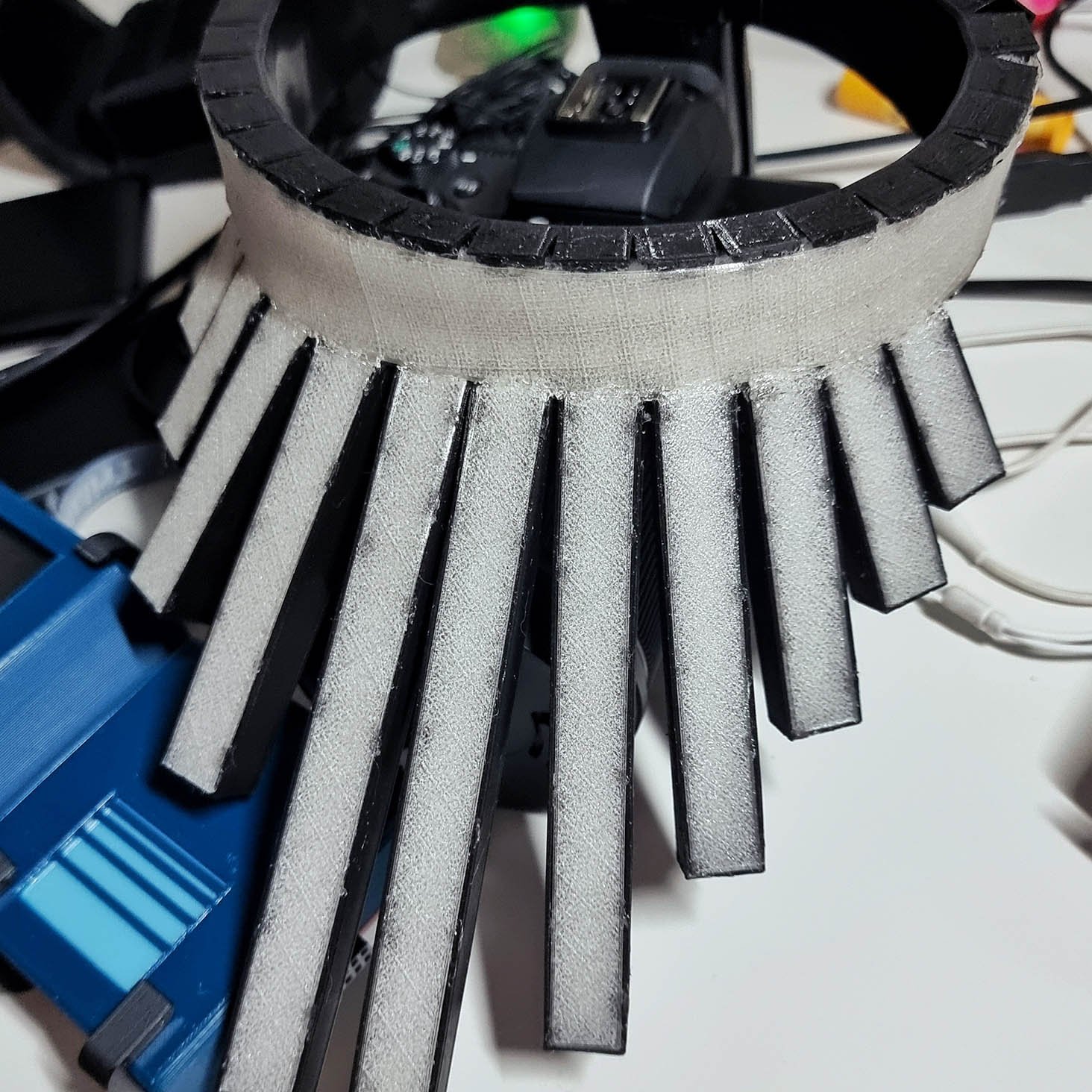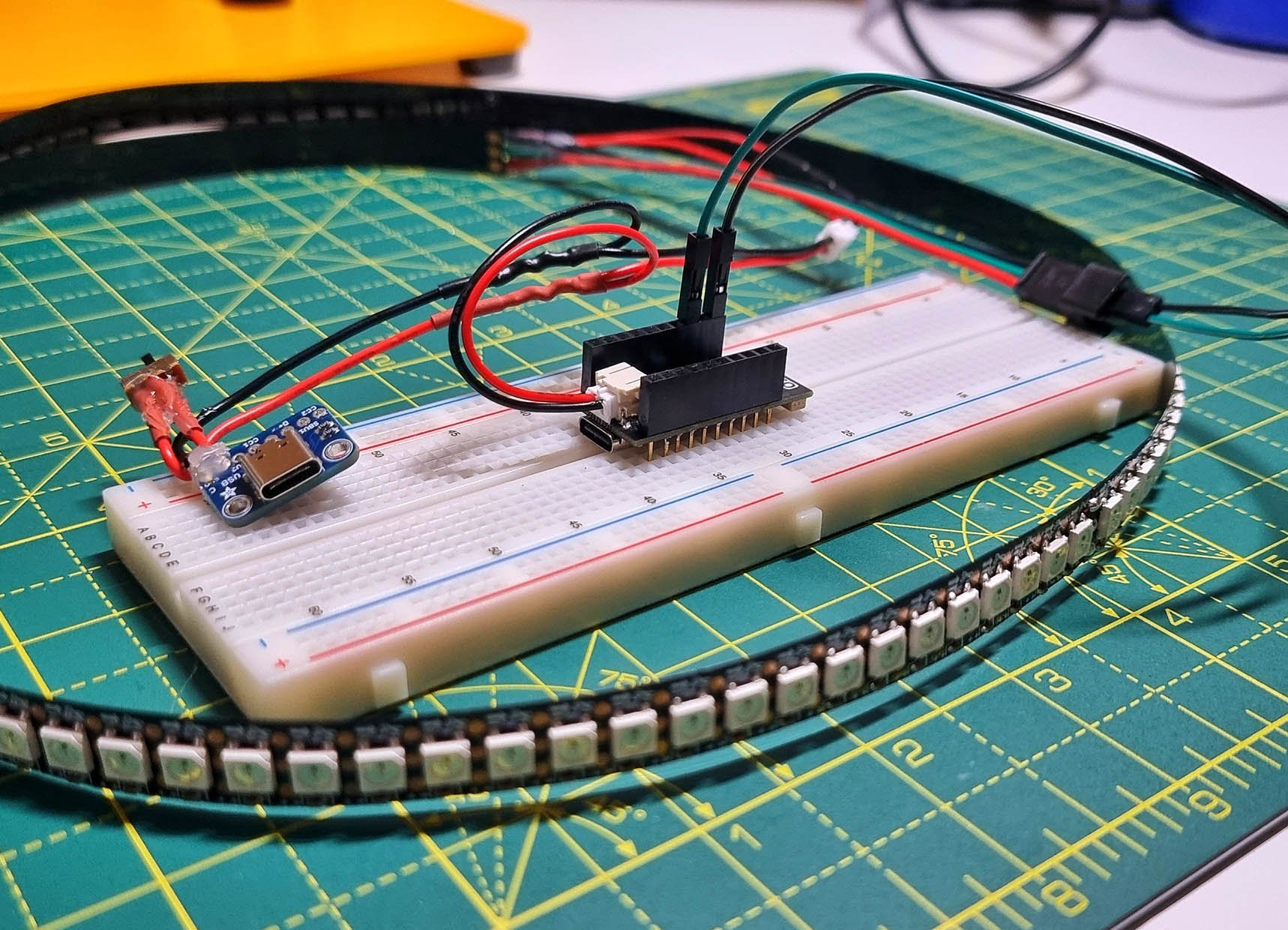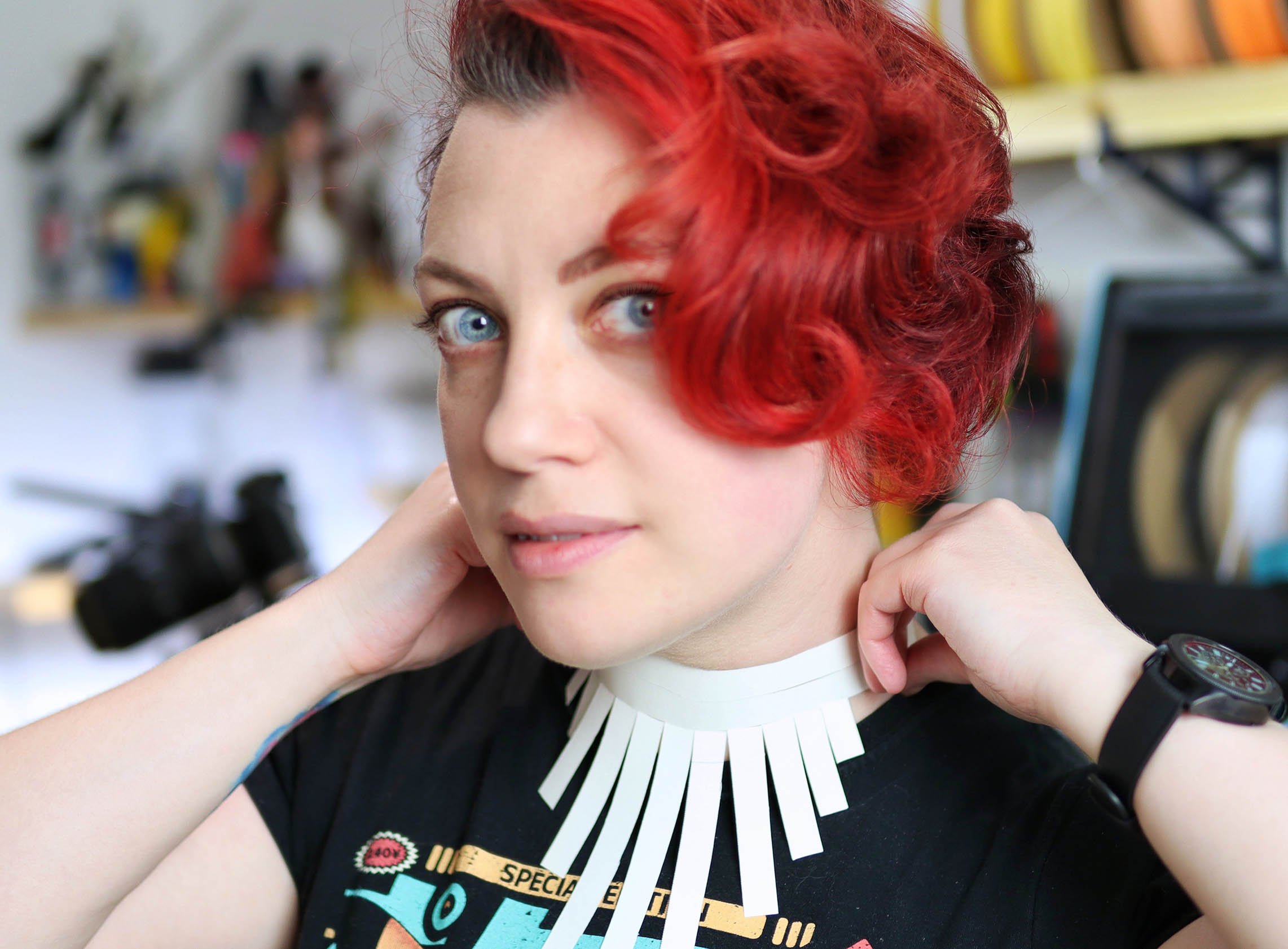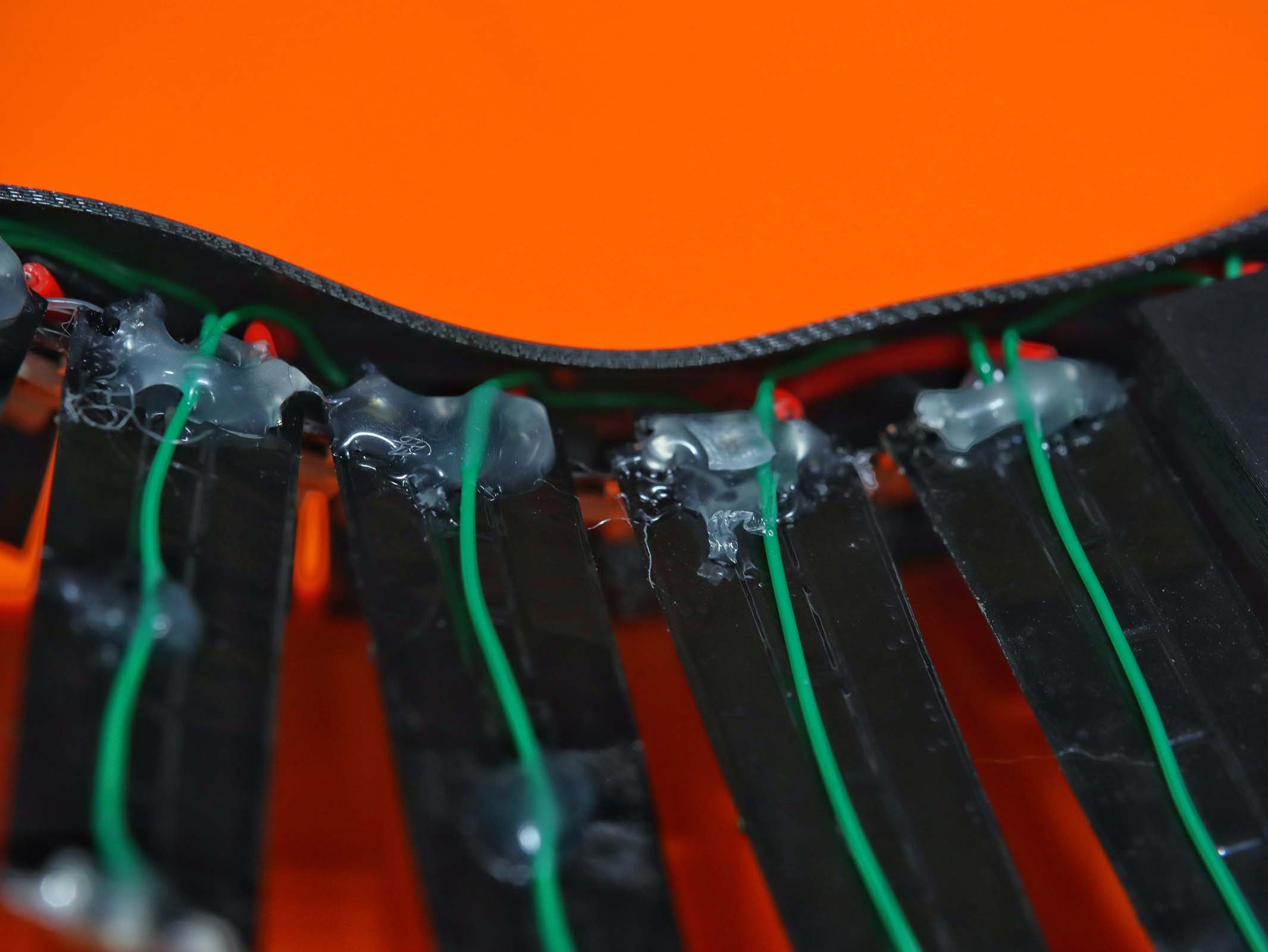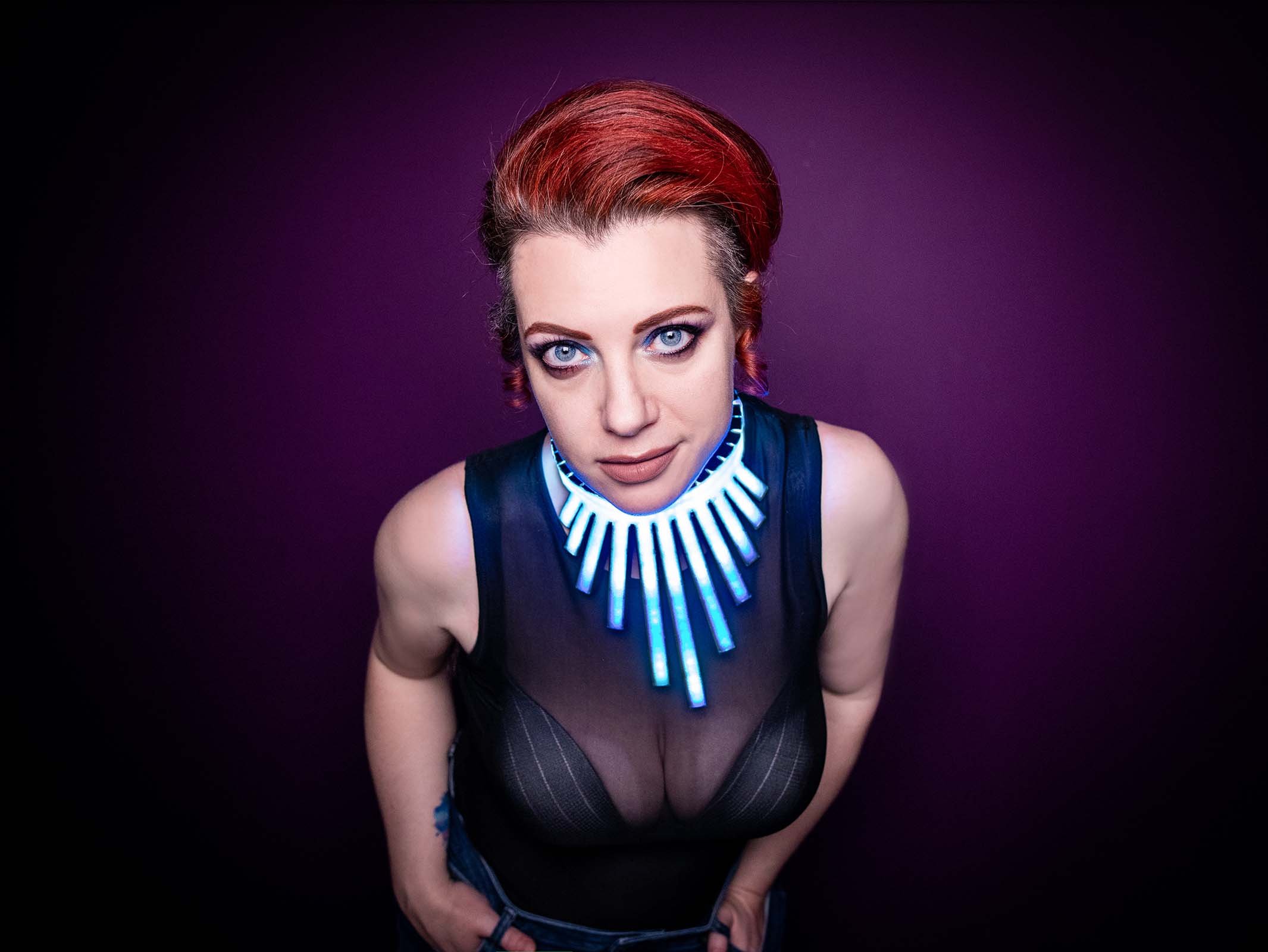
CLEAN AIR NECKLACE
Technology is remarkably efficient at extracting data from our natural world and feeding it back to us, but often does so in a way that is both incredibly dry and inaccessible to many. It doesn’t have to be that way.
One of the things I am vocally passionate about is that art and technology need not be enemies but instead can be blended together to create something better than either could alone. The Clean Air Necklace is a wonderful example of that at work; something aesthetically pleasing, interesting to engage with, that serves a real world function thanks to the technology inside it.
When I was approached by DesignSpark (a branch of world renowned RS Components) to design and build something using their Environmental Sensor Development Kit that would spark conversation around air quality, I immediately thought of how something artistic and beautiful to behold would serve this brief best.
After all, who doesn’t like to look at colourful dancing lights and wonder what they mean?
An important part of the brief for this project was that the design and required files be made available Open Source so that final piece could be built and adapted by anyone who wanted to have their hand at it. Aware that electronics and 3D printing are not exactly novice skills, I still approached the design with accessibility in mind. Wiring layouts were planned to be efficient and space saving, electrical attachments made non-permanent to allow for easy servicing, and 3D printed parts as simple and straight forward as possible.
The initial design was created with 185 individually addressable LEDS strung together in a custom matrix and mapped for animation using Jason Coon’s amazing LED Matrix Mapper. The data from the sensor is received wirelessly by an Unexpected Maker TinyPico V2, which also drives the LEDs from a fully detachable drop at the back of the necklace. The power for the necklace is handled by a USB-C port allowing for use of a portable power bank, avoiding the need for dangerous LiPo battery packs. The casing is entirely 3D printed in highly flexible TPU, with the diffusion for the LEDs provided by a combination of fire-retardant polyester wadding and custom printed clear TPU panels. The necklace features a unique dovetail enclosure making it easy to attach and detach quickly, including being able to be pulled apart one-handed in the case of an emergency. The animations were all created custom using the Arduino FastLED library and correspond with precise numerical readings from the PM2.5 readings on the sensor.
And of course, it also looks incredible.
The build video walks you through the entire process, documenting everything in a colourful, fun and highly engaging way, one of my favourite ways to show off an involved project like this one.
The Clean Air Necklace wasn’t done with me yet though it would seem, and 2023 would bring updates and Version 2 into existence.
I was contacted by the National Archives about being a part of an exhibition they were putting together to celebrate invention and making, called the Spirit of Invention. As fans of the Clean Air Necklace, they were hoping I could create a new version to put on display in their premises. Since I felt the initial design could use some tweaks and I was eager to make some adaptations, I happily agreed.
The Clean Air Necklace 2.0 features many of the same visuals as the first, including the same animations and overall look, whilst also sporting minor design improvements such as softer edges and opaque diffusers. The primary difference is that instead of the ESDK it uses a commercially available particulate matter sensor, which transmit data over serial instead of WiFi. This version of the build uses more readily available parts, and is considerably more compact.
If you want to see the Clean Air Necklace in person, it’ll be on display at the Spirit of Invention exhibit at the National Archives until the 29th of October, 2023.
All of the files to build the necklace yourself can be downloaded from my Github.




